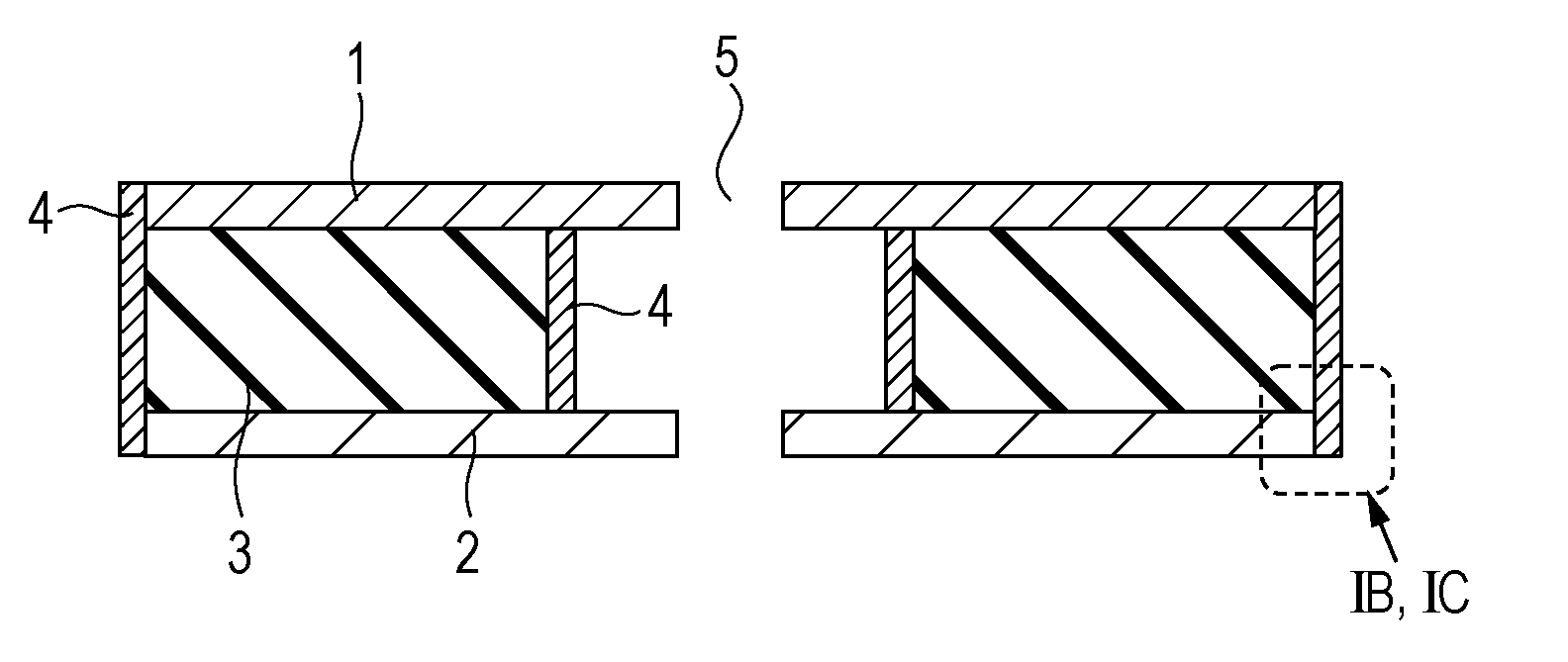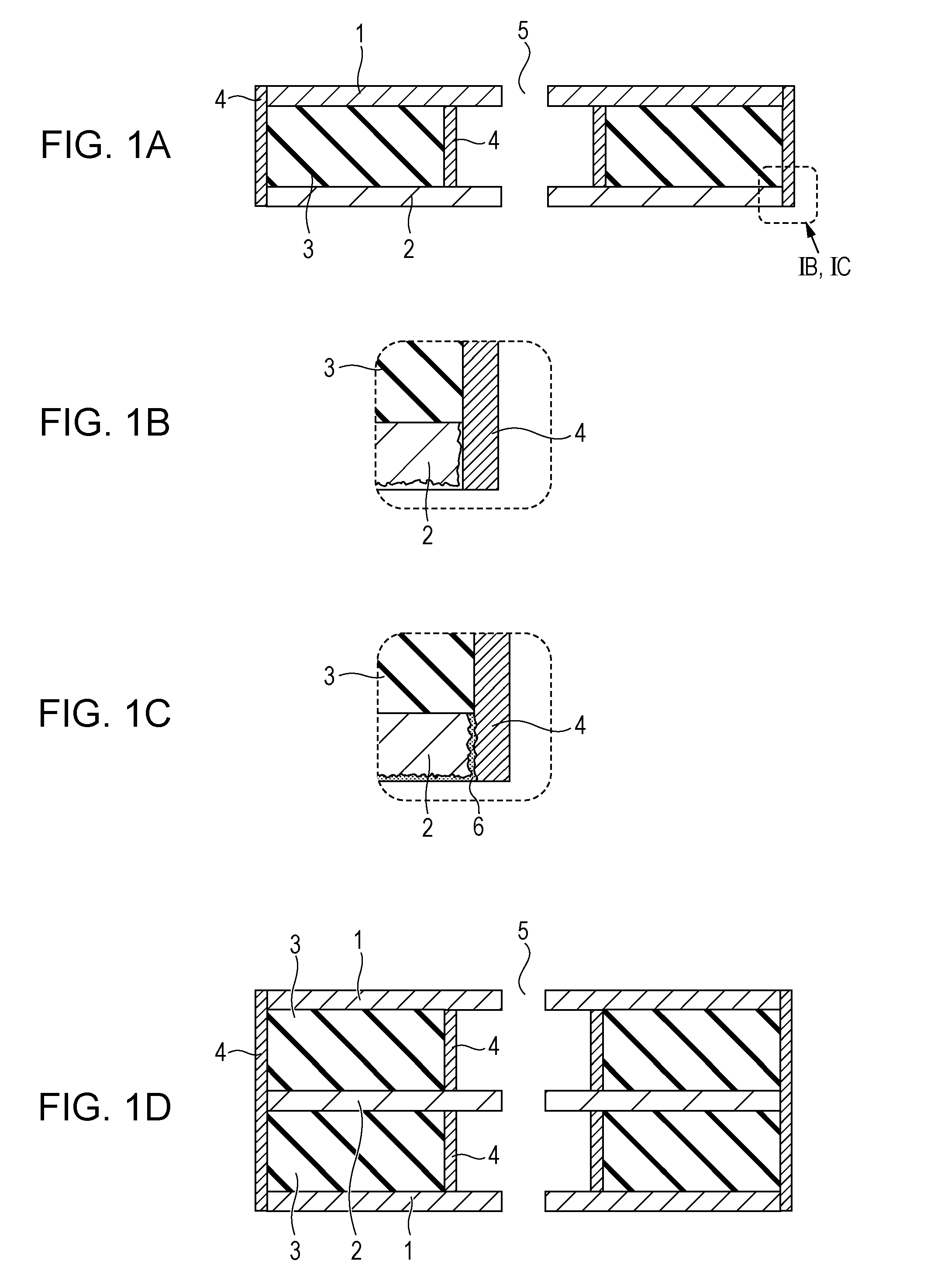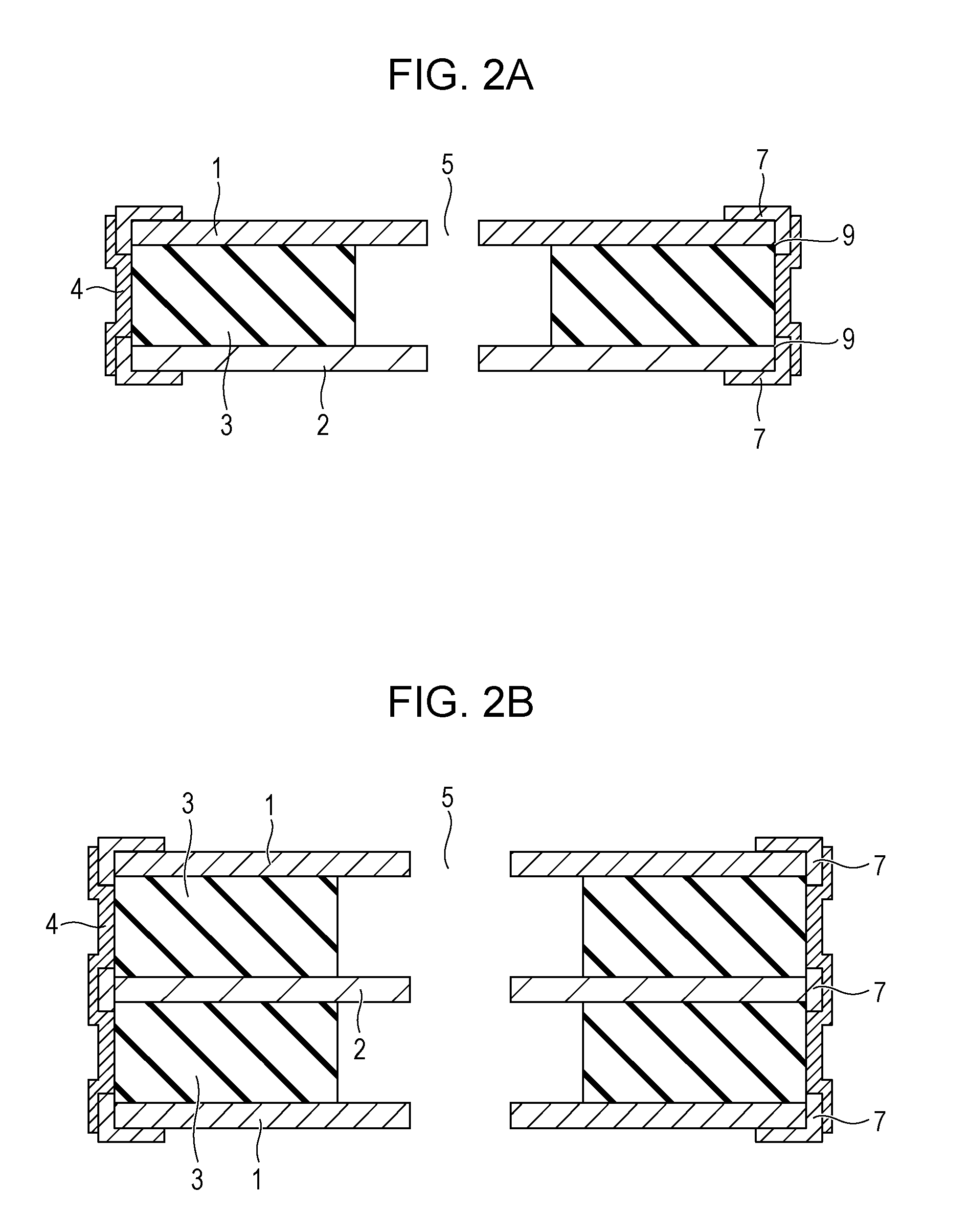Charged-particle beam lens
a particle beam and beam lens technology, applied in the field of charged particle beam optical system, can solve problems such as dielectric breakdown and discharge, and achieve the effects of suppressing discharge generation, increasing resistance, and poor connection
- Summary
- Abstract
- Description
- Claims
- Application Information
AI Technical Summary
Benefits of technology
Problems solved by technology
Method used
Image
Examples
first embodiment
[0024]FIG. 1A is a cross-sectional view showing the configuration of a charged-particle beam lens of a first embodiment; FIG. 1B is an enlarged view of an area IB enclosed by the dotted line in FIG. 1A; and FIG. 1C is an enlarged view of an area IC in the case where the embodiments may not be applied. A plate-like anode 1 and cathode 2 may have sufficient electrical conductivity and may be made of metal or a semiconductor, whose volume resistivity is preferably 1×103 [Ω·cm] or less. A plate-like insulator 3 is formed of glass or ceramic. At least the anode 1 is disposed on one of the surfaces of the insulator 3, and at least the cathode 2 is disposed on the opposite surface.
[0025]A high-resistance film 4 has a resistant value larger than the resistant values of the anode 1 and the cathode 2 and is formed of metal oxide, semiconductor oxide, metal nitride, or semiconductor nitride. The high-resistance film 4 has a resistant value that allows the potential difference between the catho...
second embodiment
[0032]Next, a second embodiment will be described using FIGS. 2A and 2B. FIG. 2A is a cross-sectional view showing the configuration of a charged-particle beam lens of the second embodiment. In the second embodiment, electroconductive films 7 are formed on the anode 1 and the cathode 2 of the first embodiment. Although the electroconductive films 7 are disposed at least between the anode 1 and the high-resistance film 4 and between the cathode 2 and the high-resistance film 4, the electroconductive films 7 may be configured to cover the anode 1 and the cathode 2.
[0033]The electroconductive films 7 are formed of metal or a semiconductor, whose volume resistivity is 1×103 [Ω·cm] or less. The high-resistance films 4 contain the same kind of element as that of the electroconductive film 7 but differs in resistant value from the electroconductive film 7, and the volume resistivity of the high-resistance film 4 is 1×104 [Ω·cm] or more and 1×1014 [Ω·cm] or less, preferably, 1×109 [Ω·cm] or...
third embodiment
[0036]Next, a third embodiment will be described using FIGS. 3A to 3D. FIG. 3A is a cross-sectional view showing the configuration of a charged-particle beam lens of the third embodiment. FIG. 3B is an enlarge view of an area IIIB enclosed by the dotted line in FIG. 3A (the high-resistance film 4 is not shown). In this embodiment, an outer peripheral side a of the anode 1 is disposed inside an outer peripheral side c of the cathode 2 and an outermost side b of the insulator 3 (at the through-hole 5 side).
[0037]The electrostatic charged-particle beam lens has a configuration in which electrodes are layered, with an insulator therebetween, in which the boundary between a vacuum region, the insulator, and the electrodes is the triple junction 9. When an electric field is applied between the electrodes, creeping discharge tends to occur on the surface of the insulator due to electron emission from the cathode-side triple junction 9 due to an electric field concentration effect, a second...
PUM
 Login to View More
Login to View More Abstract
Description
Claims
Application Information
 Login to View More
Login to View More - R&D
- Intellectual Property
- Life Sciences
- Materials
- Tech Scout
- Unparalleled Data Quality
- Higher Quality Content
- 60% Fewer Hallucinations
Browse by: Latest US Patents, China's latest patents, Technical Efficacy Thesaurus, Application Domain, Technology Topic, Popular Technical Reports.
© 2025 PatSnap. All rights reserved.Legal|Privacy policy|Modern Slavery Act Transparency Statement|Sitemap|About US| Contact US: help@patsnap.com



